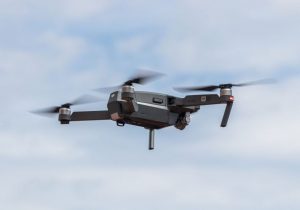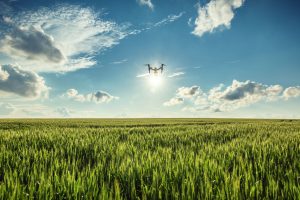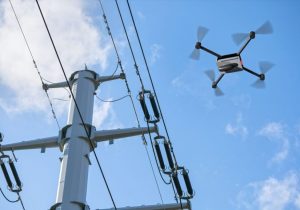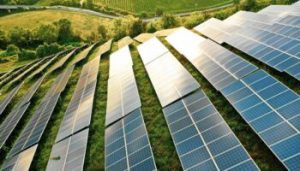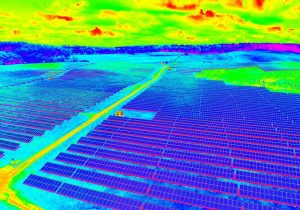Agrowing number of home inspectors are recognizing the benefits of drones in home inspections. It is the inspector’s job to examine systems and areas of a property, even hard-to-reach spaces like rooftops. The Occupational Health and Safety Act (OSHA) is a law enacted to protect the safety and well being of the worker, in this case the Home Inspector. Clause 25(2)(h) states: “An employer shall take every precaution reasonable in the circumstances for the protection of a worker”. In a home inspection the circumstance is the client expectation that the inspector will inspect the roof for possible deficiencies. Accessing a roof often requires a ladder and this puts the inspectors’ safety at risk.
Drones offer inspectors a safer alternative with advanced inspection analysis capabilities. At DRONES CYBER SECURITY, our drones are equipped with thermal and high-resolution cameras, providing a greater detailed assessment of your clients’ roof. Thermal imaging brings your service offering to the next level by identifying hidden moisture issues that can result in costly repairs to your clients down the road. This allows your clients to make a more informed decision when negotiating a home purchase.
How inspectors use drones
A roof is one of the most important components of a property. It protects the home and its occupants from the elements. Installing a new roof is an expensive home maintenance project. For this reason, it’s important to know the roof’s condition so you can adjust your offer to allow for any needed repairs. At DRONES CYBER SECURITY, we will fly our drone over your client’s rooftop capturing details with high-resolution photos and videos. Our operation is conducted from the ground, never requiring a ladder or working at heights, increasing your personal safety.
Screen the roof for hazards
Drones give the inspector an opportunity to assess a roofs condition and determine hazards if a walk is required. Often, a drone analysis provides enough high-resolution data and thermal imaging, that physically accessing the roof is not needed. This not only saves time, but is compliant with OHSA’s requirement in taking reasonable precaution to protect the home inspector. A home inspector will not walk a roof that is unsafe, and they are only required to inspect visible and accessible areas. This means that a roof which is damaged and/or unsafe will not get a thorough inspection without the use of a drone.
Inspect any type of roof
Sloped roofs are a dramatic architectural feature of a home. They are not only aesthetically attractive but serve a functional purpose, allowing snow or rain to easily run off. However, steep roofs are difficult or impossible to walk during a home inspection. Drones offer a view of the home that can’t be seen by climbing a ladder. Drones provide images of hard-to-reach areas that would not be inspected otherwise. Even if the roof is safe to walk, the inspector may not be able to safely inspect all areas and features. With a drone, the inspector can examine skylights on a steeply pitched roof from peak to valley.
Benefits of drones in home inspections
- Safety – using a drone to collect aerial photos and video of a roof can replace the need for an inspector to climb onto and walk across the roof, which is one of the most dangerous parts of any home inspection.
- Accessibility – some roofs are inaccessible because of the height, pitch, or they’re made of materials such as clay tiles that make walking on them dangerous. In addition, some roofs have tall chimneys or other features that are impossible to access. Inspectors can use tools like camera poles to try and address accessibility issues. However, these tools are limited in what they can capture and can’t always provide the level of detail needed. Drones solve accessibility issues by giving home inspectors an easy method for collecting visual data on the condition of a roof without having to climb the building and walk across it.
- Customer Satisfaction – traditionally, home inspectors who encountered inaccessible roofs were put in the difficult position of having to tell clients that they couldn’t provide any information on the condition of the roof. In these instances, which are not uncommon, clients may have to pay extra to hire roofing companies to collect roof data or simply accept the risk of not knowing about the state of the roof. By incorporating a drone and aerial imaging into your inspection service you can improve customer satisfaction by collecting all the information needed to assess the property.
- Efficiency – drone pilots at DRONES CYBER SECURITY are professionally trained, certified and insured. We can quickly conduct an aerial survey and provide you, the home inspector, with high-resolution photos, video, and thermal images. This allows you to concentrate efforts on other areas of the inspection, improving your turnaround time and increasing your rate of efficiency.
- Marketing – as a business owner, you are always looking to differentiate yourself from the competition. Adding a drone inspection and aerial imaging to your service offering allows you to retain that competitive advantage. Home inspectors who incorporated drones have reported an additional value beyond its usefulness for the inspection itself. Aerial video and photos provide inspectors with dynamic materials they can use to showcase the quality of their work and catch the eye of potential clients.
The benefits of drones in home inspections is a game changer that adds value to both the home inspector and your client.

